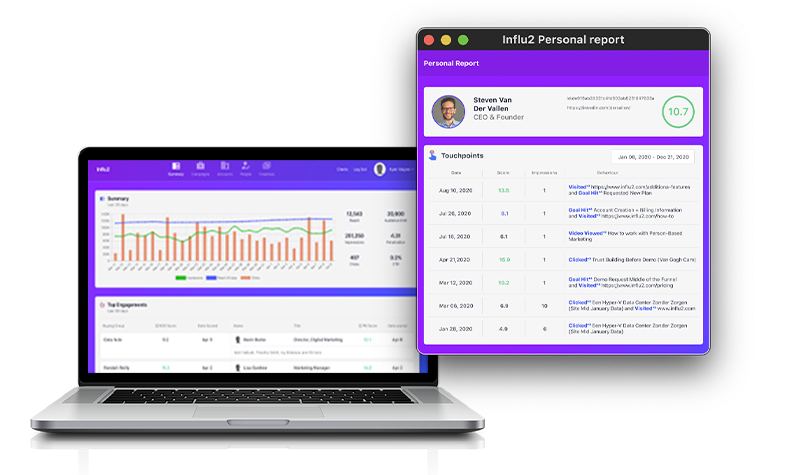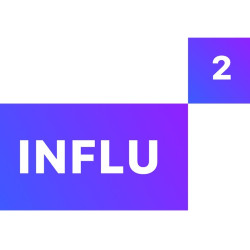If you're lucky, you've had the experience of seeing a graceful swan gliding along the surface of a crystalline pond with hardly a surface ripple. It's so beautiful that you likely don't think about the unglamorous churning of webbed feet below the surface.
When viewing the fantastic creature, you care only about its graceful beauty and sense of peace it evokes.
Your customers are a little like that. They don't care about the internal structure of the marketing and sales efforts that you use to deliver the goods. But if you don't have the right strategy or the right tools, and your left and right foot—embodied by your sales and marketing teams—aren't working together, you just might sink the entire swan metaphor.
Why?
Your customers seek a great experience, and your job is to deliver it. To do that, you must pay careful attention to each flip of a webbed toe throughout the customer buying journey to ensure they are getting a smooth ride up top—from the first touch... to closed deal... to beyond.
But if you are like most tech companies, you're not providing that experience as well as you could. In fact, a full 74% of B2B tech buyers are challenged with complexities in the buyer journey that impact their ability to obtain quality deals, Gartner has found.
Here are three recommendations for creating great customer experiences to engage buyers and move them through the funnel.
1. Employ a buying group marketing strategy
If you are like most enterprise B2B tech companies, you likely have some form of account-based marketing (ABM) strategy in place that identifies valuable target accounts and personas and then employs ABM-specific data enrichment technology to individualize the marketing content. ABM personalizes outreach and helps you to get your sales and marketing teams in sync; however, although ABM is a definite step forward, challenges remain.
Relying only on traditional ABM doesn't take into consideration a critical factor: Buying decisions in modern organizations are made by teams. "In the purchase of a solution that cost more than $5,000, it was a group of three or more making that decision 84% of the time," Forrester has found.
The goal of buying group marketing (BGM) is to engage the entire buying group at target accounts. The approach enables you to design context-aware content for each stage of the journey and for each persona involved in the decision process—whether in IT, Legal, Marketing, or some other function.
BGM is personalization on a granular and relevancy level. Your content, creative, and delivery should be designed around the different pain points and needs of buying group members, closing out the era of generic content.
2. Conduct personalization with person-based advertising tools
Implementing a solid BGM strategy depends on the tools you use to execute and measure it. A person-based advertising (PBA) tool can help you create and deliver personalization based on contextual relevance, and it also gives you insights on performance across your internal platforms and channels.
For instance, Influ2's PBA features attribution reports that show granular person-based insights. Instead of numbers and figures, the reports show a holistic view of the activity of the contacts in your buying groups, enabling Sales and Marketing to have clarity on what buyers care about. The data is based on the specific buying group involved in decision-making, not on the entire account.

PBA helps you hone your work by providing meaningful data for measuring and improving on campaigns and better analyzing your channels of delivery.
3. Align your Sales and Marketing engagements
Alignment between sales and marketing is vital to a BGM approach. Poor communication and organizational silos are the enemy, creating inaccurate data and unpleasant, disjointed customer experiences.
Aligning the sales and marketing teams requires a fundamental paradigm shift that is part of a good BGM strategy: a unification of the funnel. After that shift, there is no handoff from Marketing to Sales; rather, both teams work together from first touch to last—sharing data in common, coordinating messaging, and using common technology and metrics.
Keep the waters calm and carry on
The goal of the tips in this article is to curate and validate a premium customer experience and drive measurable results.
At the top of the funnel, all activity should drive awareness of your brand or product. In the middle of the funnel, you're working to educate your buying group, and that phase depends on Marketing's and Sales' working together to map out the buying groups within your target accounts. Once those have been defined and they begin to engage, you can split activities between the marketing and sales departments with customized but choreographed messaging based on each persona.
BGM does require a degree of organizational maturity, but the upside of that level of strategic precision—when implemented successfully—is that it not only helps close more deals but also serves as a marketplace differentiator that will help your swan take flight.
Written by Nirosha Methananda, VP of Marketing for Influ2.




